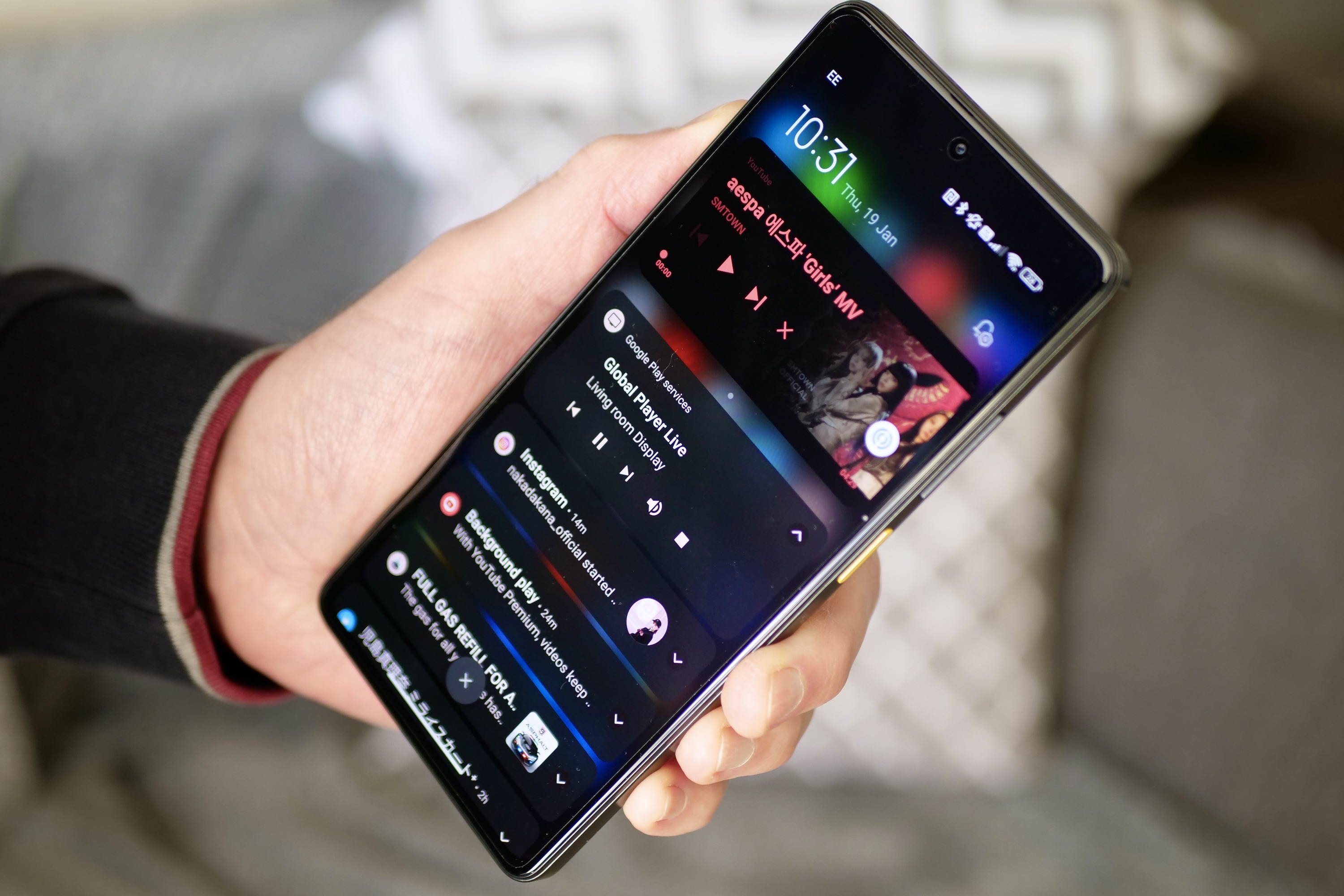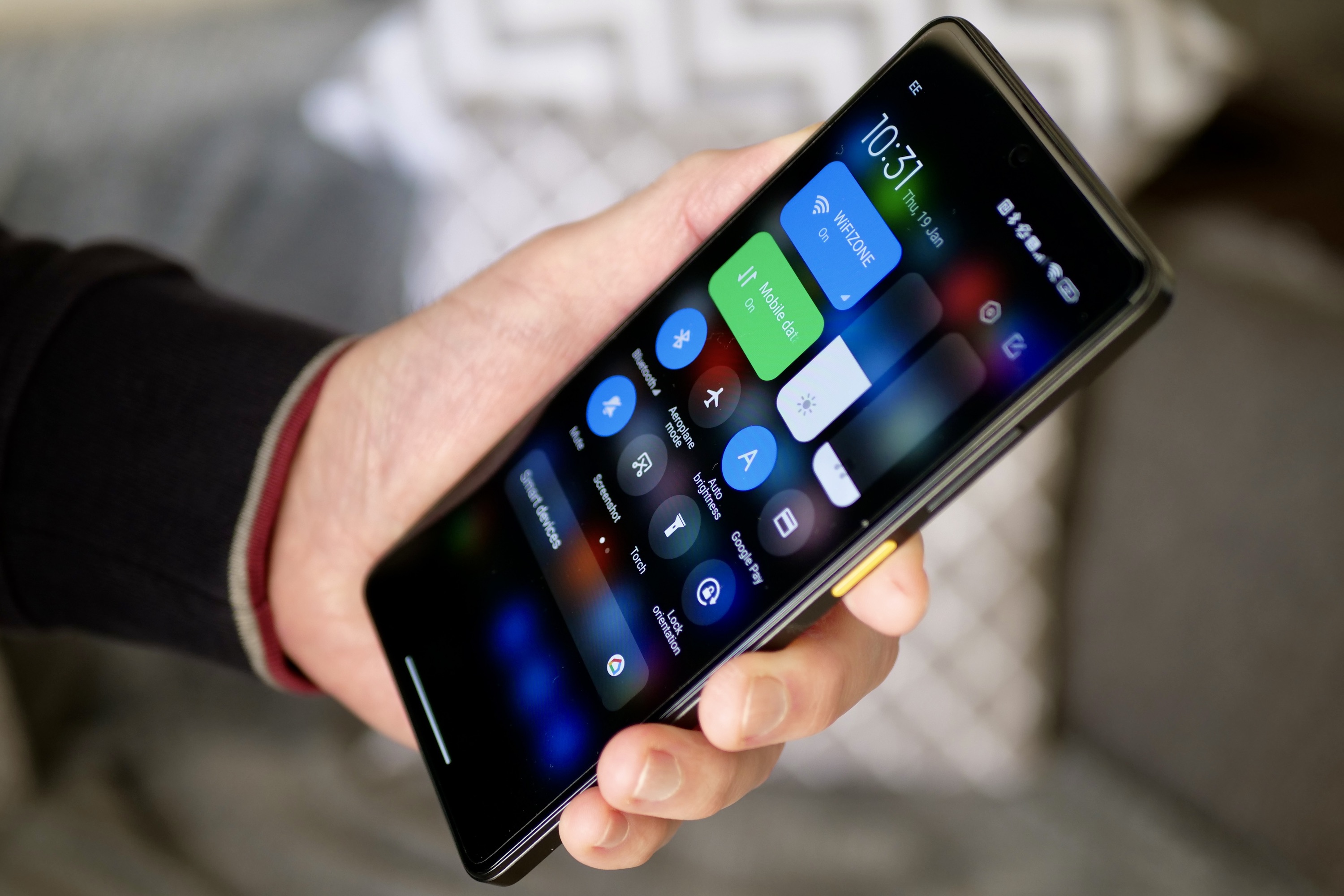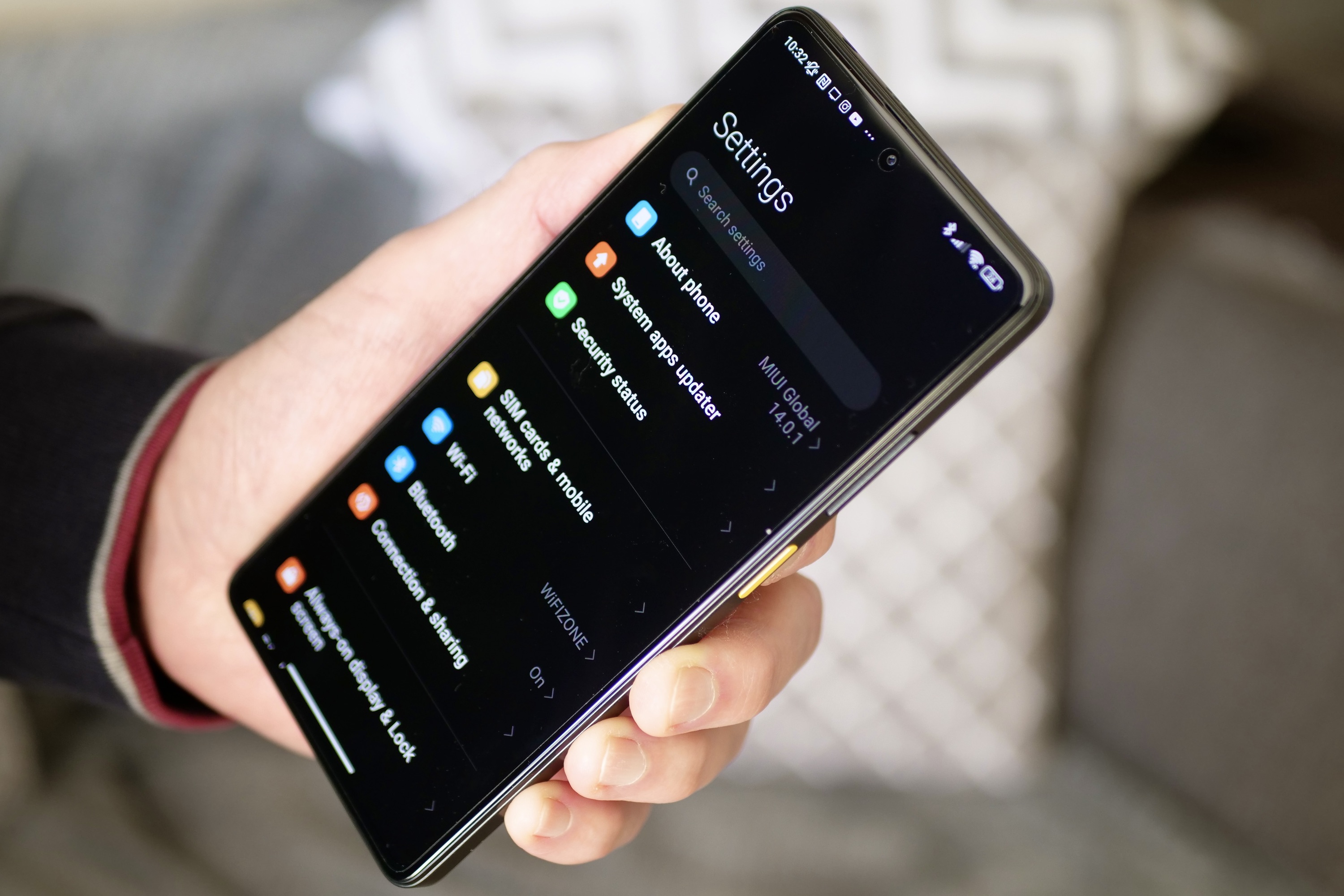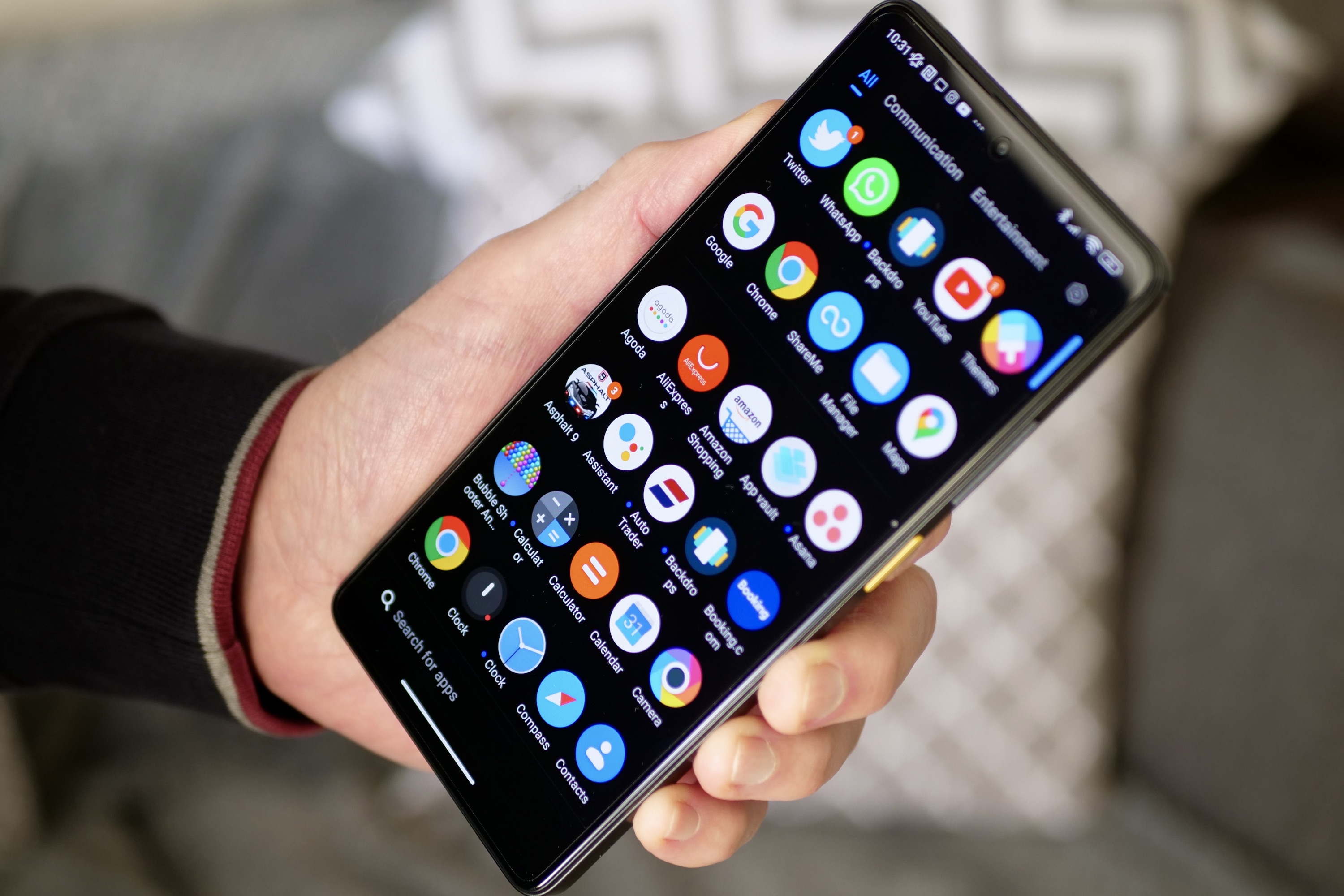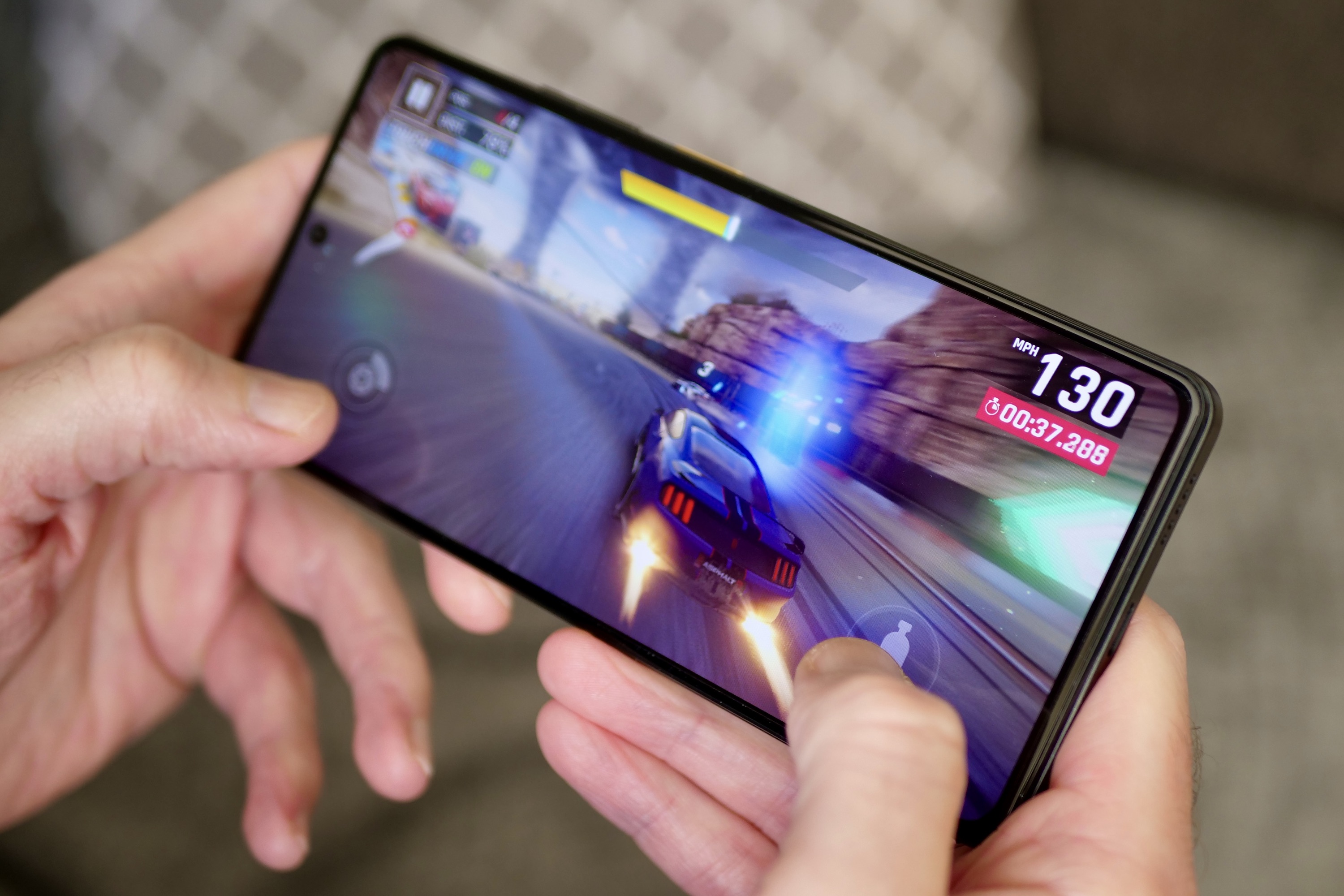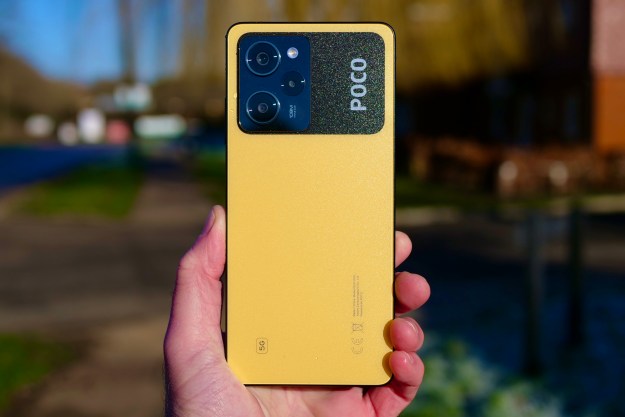
“The Poco X5 Pro is a slight update to the X4 Pro, and while the screen and battery impress, the software is cluttered and the phone lacks that something special to recommend it.”
- 120Hz screen
- Two-day battery life
- 108MP camera takes good photos
- Cluttered software
- Poor wide-angle camera
Exactly how different does a new smartphone need to be compared to the model it’s replacing for it to be truly classified as “new?” Is a new design enough, or does it need brand new features and fully upgraded hardware too?
That’s the question I’ve been mulling ever since using the Poco X5 Pro, because it’s barely any different from the Poco X4 Pro, which was announced about a year ago. Was the X4 Pro so good that it didn’t need to be changed, or is it all just laziness on Poco’s part?
Poco X5 Pro design

The Poco X5 Pro looks different from the Poco X4 Pro, but it’s clear they are related. The X5 Pro has flat sides, a flat rear panel, and a flat screen. It’s slab-like, much like the Poco X4 Pro, the Redmi Note 11 Pro, and the Xiaomi 12 Lite. These are important comparisons because they all have a great deal in common. The X5 Pro’s chassis appears to be made of metal, and there’s Gorilla Glass 5 over the screen, but it has a plastic rear panel.
The camera module is conventionally set in the top left, and the branding is placed alongside it against a black background, giving the impression the module is far larger than it actually is. This is the same design strategy Poco took with the X4 Pro, — it just chose a different orientation. My review phone is in bright yellow with a black chassis, but black and blue models are also available, as was the case with the X4 Pro.

It’s a big smartphone. It’s wide at 76mm and quite thick at 7.9mm, which is emphasized by the flat sides. It makes using the phone with one hand awkward, and this isn’t a phone for those with small hands. Poco says it’s the thinnest X-series phone it has made, but as the X4 Pro was 8.1mm thick, I’d be pretty surprised if you can feel the 0.2mm difference between them.
It’s substantially lighter than the X4 Pro at 175 grams, which considering the overall size of the phone, is impressive. But the X4 Pro had a glass rear panel and a plastic chassis. The older phone’s basic-but-welcome IP53 rating has disappeared too, and although the phone feels durable and well-made, it lacks even that simple reassurance that it’ll handle a splash of water. Unusually for a modern smartphone, it has a 3.5mm headphone jack.
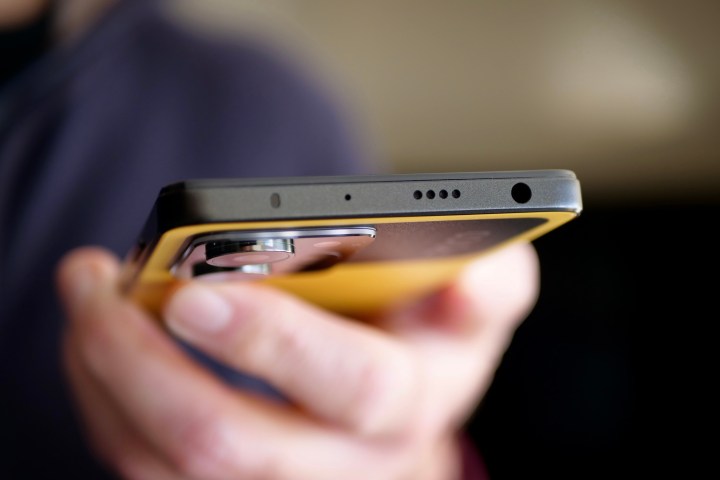
Does the Poco X5 Pro have a new design? Yes, it’s clearly a distinct device despite sharing many of the same elements as the Poco X4 Pro, but not all the changes are positive.
I’ll take the lower weight if it means sacrificing the glass back, but it’s a shame the IP53 rating has been forgotten. The yellow color won’t be to everyone’s taste, but it genuinely does capture attention.
Poco X5 Pro screen, performance, and battery
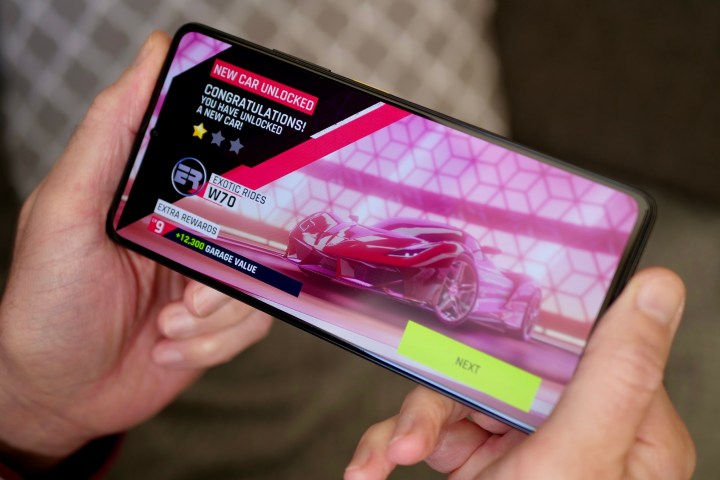
The Poco X5 Pro has a Qualcomm Snapdragon 778G processor inside, which is the only hardware change between it and the Poco X4 Pro. The old phone made do with the Snapdragon 695 chip. There’s a choice of 6GB or 8GB of LPDDR4X RAM, with either 128GB or 256GB storage space, respectively. The screen is a 6.67-inch AMOLED with a 120Hz refresh rate and a 2,400 x 1,080 resolution. It’s powered by a 5,000mAh battery with 67-watt wired fast charging.
Chipset aside, this is all exactly the same as the Poco X4 Pro. Dig into some of the really nerdy specs, and the X5 Pro, unfortunately, seems to have a few downgrades. Poco says the X5 Pro’s screen has a typical brightness of 500 nits and a maximum of 900 nits — both of which are below the X4 Pro’s quoted levels. I’ve not had any trouble viewing the screen in the winter sun, though. The 240Hz touch sampling rate is also lower than the X4 Pro’s 360Hz. Apparently, the X5 Pro’s screen is a Flow AMOLED panel, which is different from the X4 Pro’s Dot AMOLED, but it’s not clear what difference this makes.
The 120Hz refresh rate is a real reason to buy the Poco X5 Pro, as it’s rare to find such a high refresh rate on a phone at this price. The smoothness is apparent if you are coming from a phone with a 60Hz refresh rate screen, but it’s practically impossible to see any difference between it and a 90Hz screen. The flat panel will please some hardcore gamers, but others will dislike the way it reflects light, which can be frustrating outside.
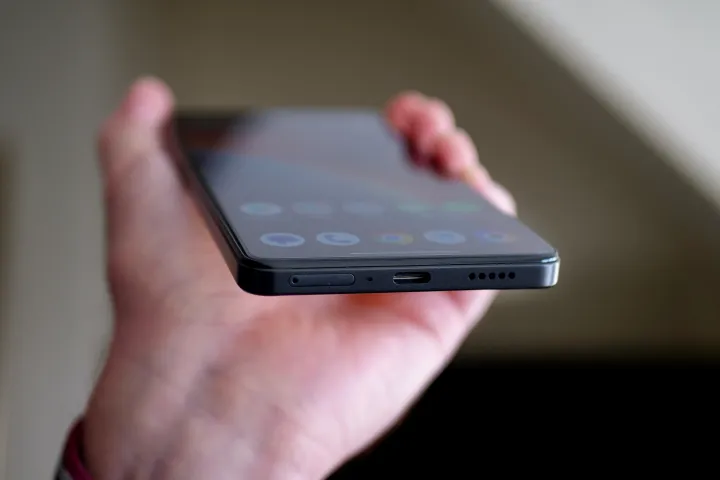
The old Snapdragon 695 processor wasn’t a winner, so any upgrade is very welcome, and the Snapdragon 778G has been fast and reliable. However, it came out in mid-2021, so it’s still not exactly new. For everyday tasks, including video and games, it’s plenty powerful enough. Asphalt 9: Legends plays well, but it’s not as perfectly smooth as it is on phones with higher-end processors, but that’s to be expected. The phone gets a little warm to the touch after playing for about 30 minutes, and it depletes 10% of the battery during that time too.
It’s efficient, and the Poco X5 Pro sips power when you use it modestly. I’ve turned the phone off overnight and managed two days of use without even thinking about charging it. That’s with two to three hours of screen time each day. Watch videos for 30 minutes, and the battery percentage drops by 3%to 4%. The relatively ordinary specification, some clever cooling, and the large capacity battery make the Poco X5 Pro a battery life winner.
Poco X5 Pro camera

On the back of the X5 Pro is a 108-megapixel main camera, an 8MP wide-angle camera, and a 2MP macro camera. In the top-center of the screen is a 16MP selfie camera. Poco hasn’t revealed the exact sensors being used, but apart from a slight increase in the wide-angle’s field-of-view (it’s now 120 degrees, not 118 degrees), it’s the same setup as the Poco X4 Pro’s camera. However, the Snapdragon 778G will speed the system up, the ISP is more capable, and it can now shoot 4K video.
Considering this is a low-cost phone, the main camera takes colorful and shareable photos. In bright sunlight, the saturation levels are quite high, but this does mean few people will dig into the Gallery app’s editing suite before putting the photo online.
In less optimal conditions, the camera has good white balance and detail, so I never felt like it would let me down. However, it can give some photos a blue tint, and color accuracy can suffer in some circumstances.
The wide-angle camera isn’t as good, and it produces high-contrast, low-detail photos with severe distortion around the edges. It’s yet another token effort 8MP wide-angle camera that doesn’t offer much benefit, and the 2MP macro camera is no better, meaning you’ll really only want to use the main camera. It’s a good thing the photos it takes look good, and it will please people who want to take Insta-ready images without much fuss. The selfie camera is also solid, producing plenty of detail and good skin tones.
Poco X5 Pro software
Poco is part of Xiaomi, and therefore it uses Xiaomi’s MIUI 14, which is a version of Android 13 with some small Poco-related tweaks. MIUI 14 here is very colorful, with Poco’s design tweaks changing some icons and menus. Whether you’ll like it depends on your love of bright, primary colors and in-your-face designs. There’s nothing minimalistic or subtle about MIUI on the Poco X5 Pro.
There are a lot of customization options, many notifications telling you about services on the phone, battery life warnings, and different things happening depending on where you swipe. If you find One UI too busy on a Samsung phone like the Galaxy S22, you’re not going to like Poco’s version of MIUI. A great example of its cluttered, irritating design is how you swipe down on the left of the screen to see notifications, and on the right to see your Quick Settings. On every other phone, these are combined, and for good reason: It makes sense, and is perfect for one-handed use. It’s really annoying on the X5 Pro.
Oddly for a phone with many customizations, the always-on screen is restricted to only showing the time and notifications for 10 seconds. There’s no option to tie it into your Do Not Disturb settings and have it visible all the time, like almost every other smartphone you can buy today. Poco also preinstalls plenty of games and apps. I’m sure that if you spent time getting the settings right, and then a few weeks refining it, you’d get used to MIUI 14. But I’d prefer a well-designed, user-friendly default setup that welcomes new users, instead of one that seems to be out to baffle and frustrate.
Poco X5 Pro price and availability
The Poco X5 Pro costs 369 British pounds, or about $445, and there is a single 8GB/256GB version available. This is considerably higher than the Poco X4 Pro’s price, which started at 259 British pounds, or about $320. Poco has launched a non-Pro X5, which starts at 249 pounds, or around $300, but this comes with the Snapdragon 695 and a 48MP main camera. The choice of phones around $350 or 300 pounds is extensive, so competition is tough for Poco.
The OnePlus Nord N300 is our $250 pick for the U.S., but also take a look at the Moto G Power or Moto G Stylus. In the U.K., we recommend the Nothing Phone 1, but the OnePlus Nord CE 2 and Realme 9 Pro+ are also good buys. However, it would really be worth saving up a little more to get the Google Pixel 6a or the Samsung Galaxy A53 5G, both of which cost around $450 but offer far better features, software, and cameras.
The Poco X5 Pro doesn’t do anything new

The Poco X5 Pro’s design is pleasant, I like the bright yellow color, and the specification is decent, but it is essentially the same as a phone released in early 2022 — and that’s not great at all. It’s also barely any different from the Redmi Note 11 Pro and the Xiaomi 12 Lite, two other year-old phones. It makes me question the value, and that’s a concern on a cheap phone.
Are there any reasons to buy it? You get plenty of life out of the large battery, the screen has a 120Hz refresh rate, and the camera is decent for a phone at this level. However, the software is cluttered, and only the main camera is worth your time. The Poco X4 Pro certainly deserved a new processor, but to make that the only major change in its replacement, and therefore the main reason to consider buying it, means the X5 Pro is a disappointment.
It’s a shame because it’s actually quite a good phone, but it’s unfortunate Poco didn’t push the X5 Pro’s specifications just a little further to make it a true successor to the X4 Pro, and worthy of a 2023 upgrade particularly because of the substantial price hike. Rather than getting a strong recommendation from us, it’s worth waiting to see what the competition brings out over the next months before deciding to buy. Perhaps one will have something special that makes it the one to buy over this rather lazy rehash of a 2022 phone.














